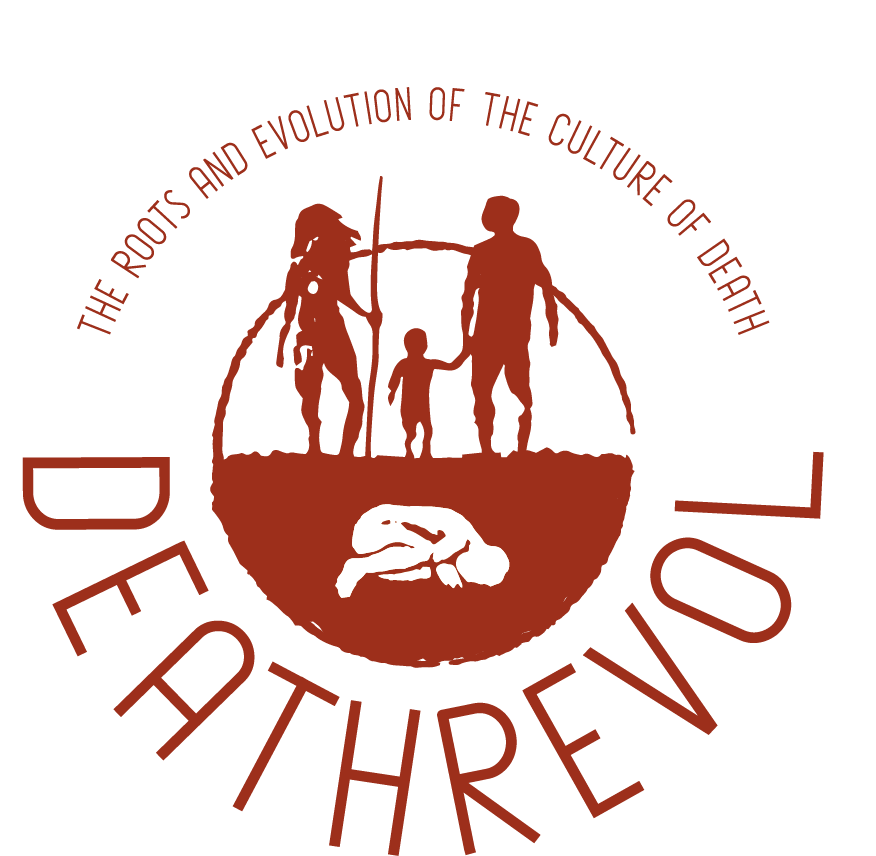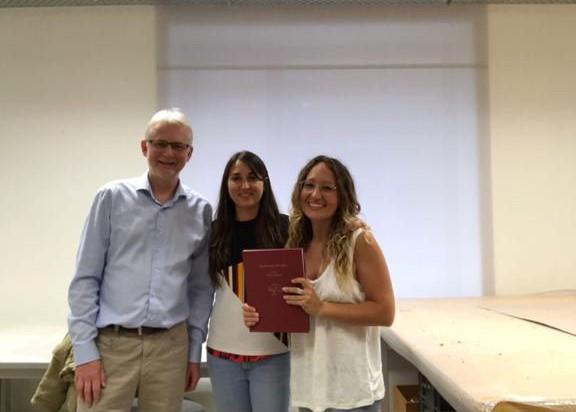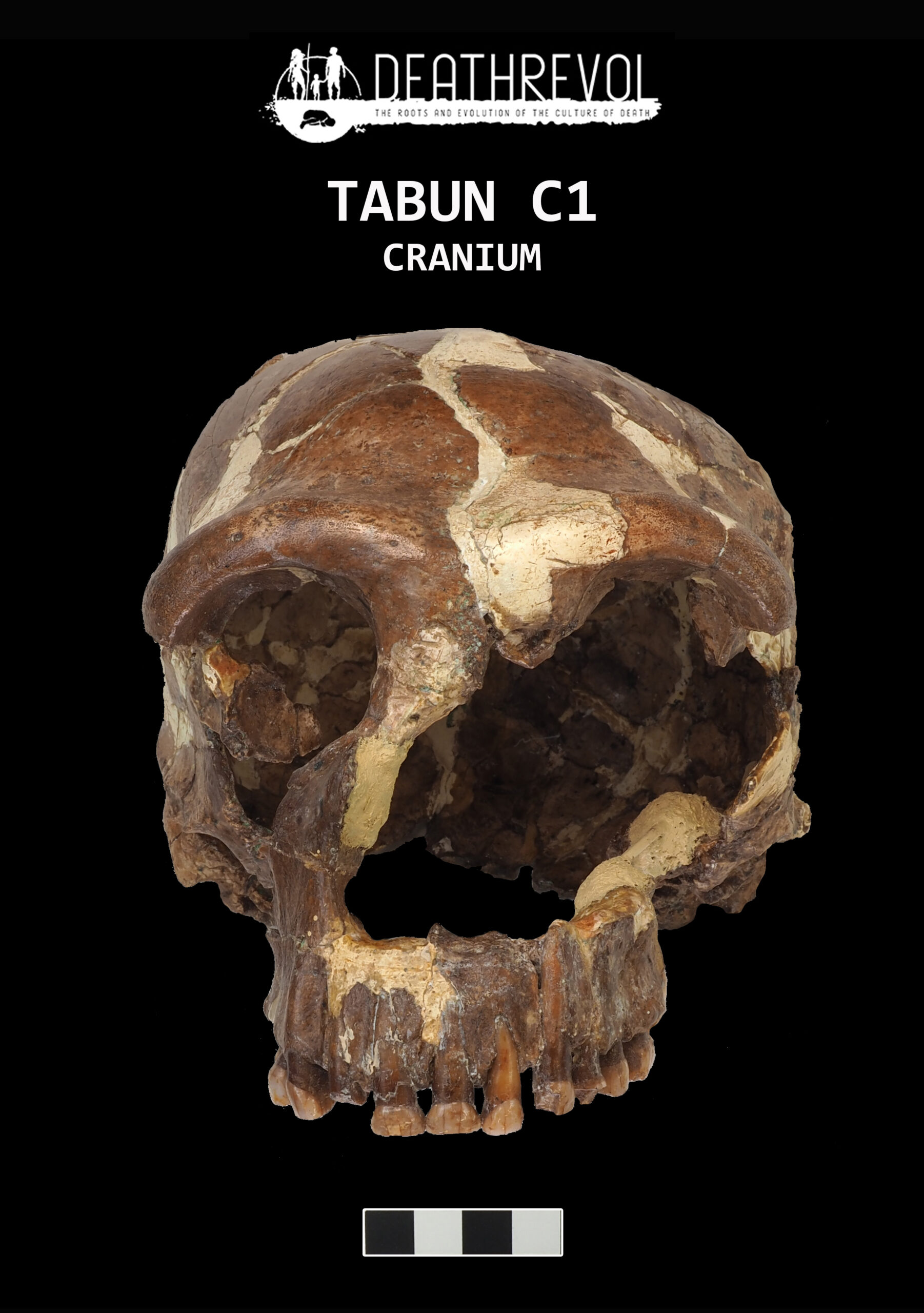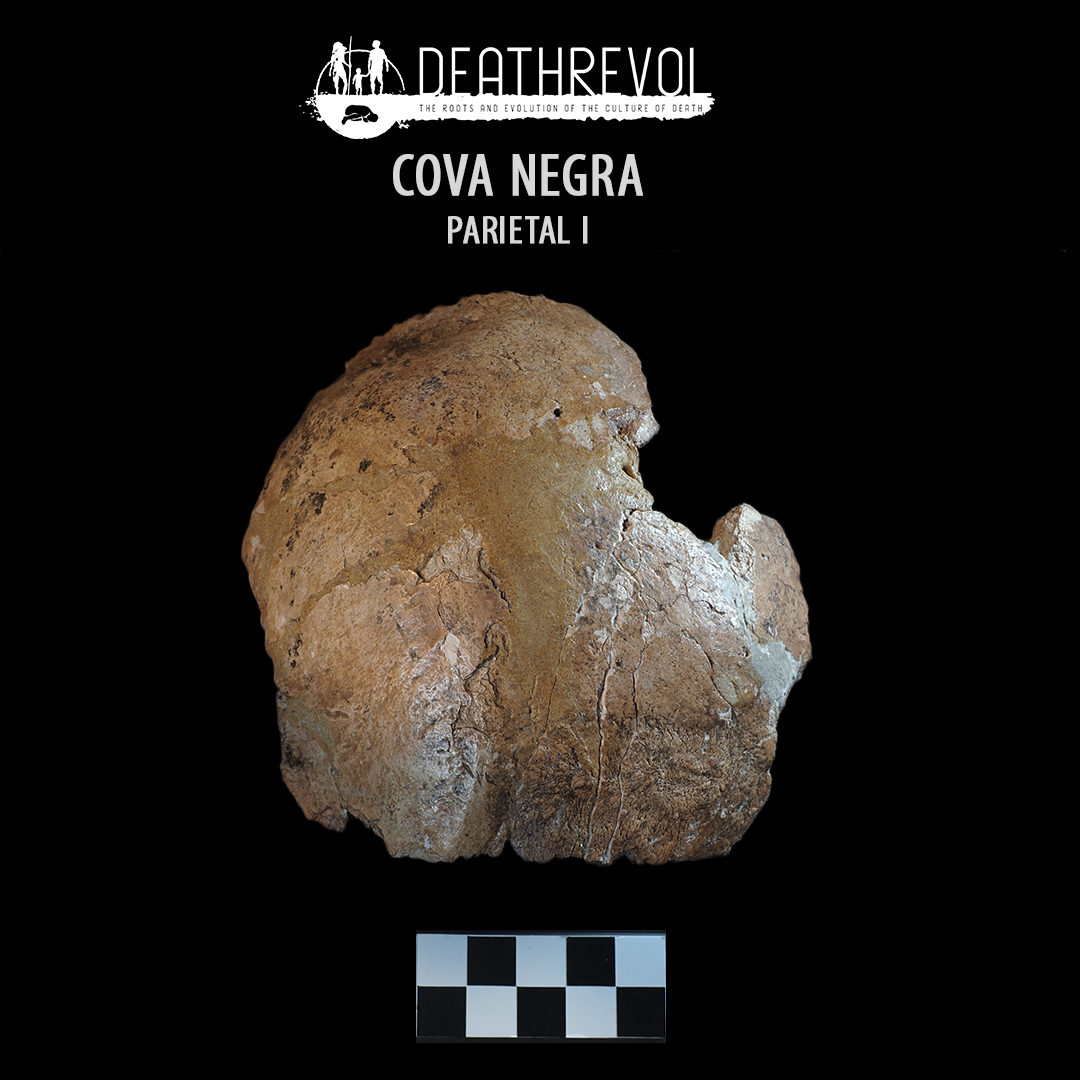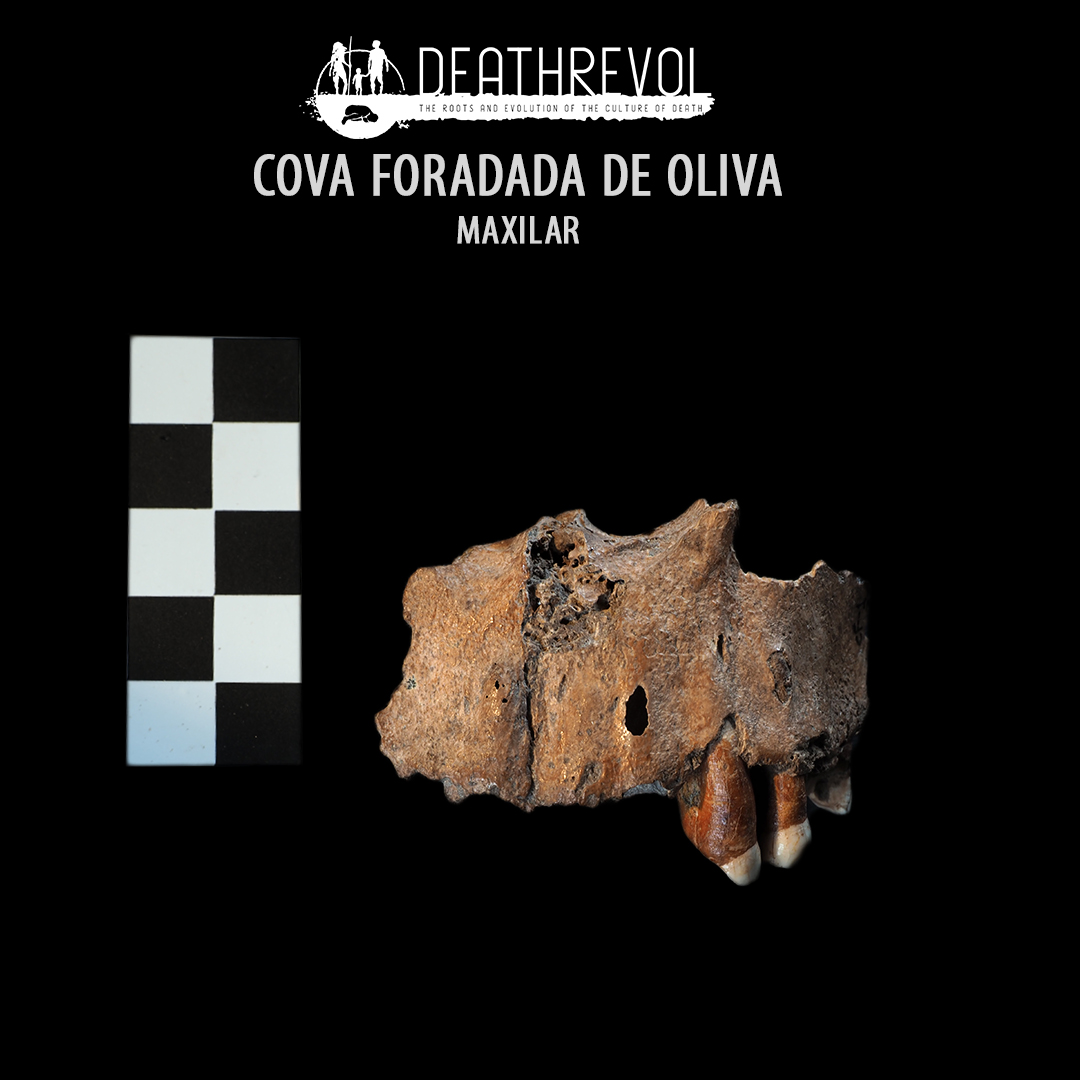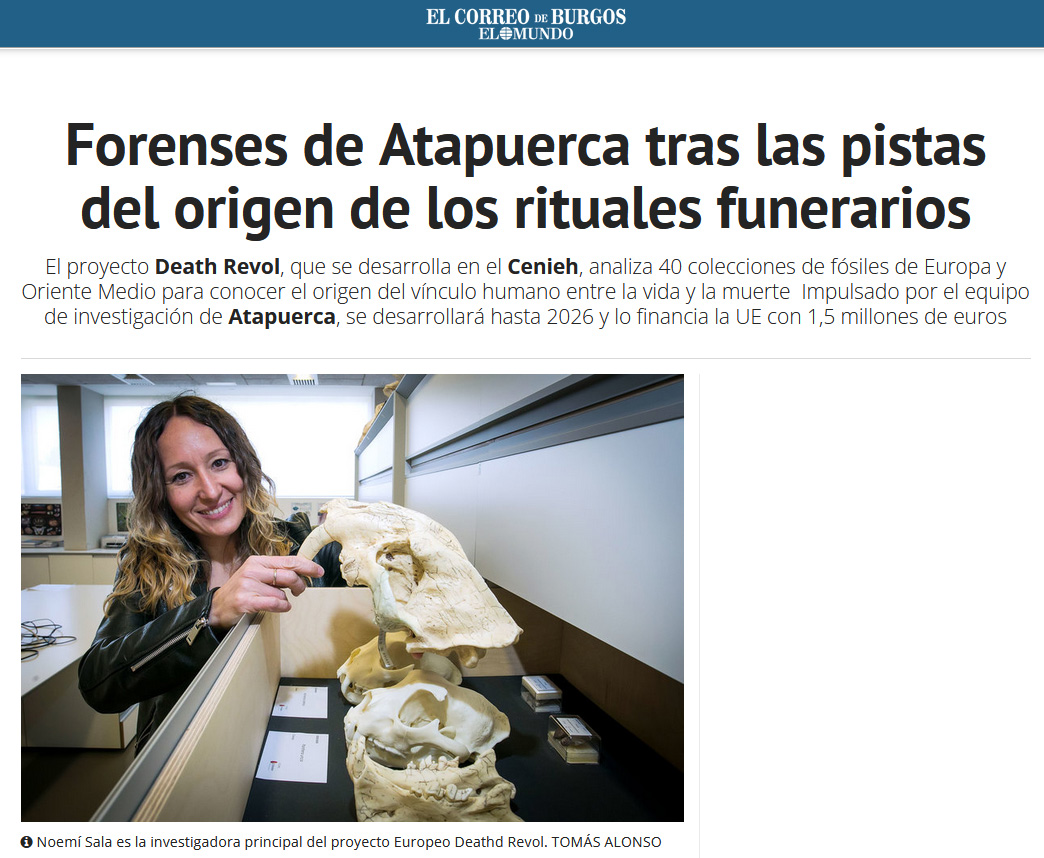TRAVELLING WITH DEATHREVOL: BONN (GERMANY)
At LVR-LandesMuseum Bonn (https://landesmuseum-bonn.lvr.de), with the support of Ralf Schmitz, we have been able to analyze and study the Feldhofer collection (Middle Palaeolithic – Neanderthals) and Oberkassel collection (Palaeolithic – Homo sapiens).
TRAVELLING WITH DEATHREVOL: CARDIFF (WALES)
The National Museum of Wales (https://museum.wales/cardiff/) houses, among others, the fossil collection from Pontnewydd Cave (Denbighshire, Wales). The DEATHREVOL team has had the great privilege to have access to this collection and to carry out a detailed taphonomic analysis, which helps to try to fulfill the first objective of the project: determine the emergence of the culture surrounding death in the Middle Pleistocene.
The Pontnewydd collection, composed of at least 5 individuals deposited in the cave 225,000 years ago, is especially relevant in this search for taphonomic signs of intentional treatment of the dead.
LIFE AND DEATH IN THE MIDDLE PLEISTOCENE
Here you can watch the conference called “Vida y muerte en el Pleistoceno medio. Lo que nos cuentan los cráneos de la Sima de los Huesos” given by Nohemi Sala in the Museo de la Evolución Humana (Burgos).
TRAVELLING WITH DEATHREVOL: LONDON (UK)
The Natural History Museum in London houses one of the most important collections of human fossils in the Palaeolithic record. This collection includes Middle Pleistocene hominids such as Swascombe or Boxgrove, as well as Neanderthals (eg Tabun C1) and Late Pleistocene Homo sapiens (eg Es Skhul).
These individuals are essential to be able to investigate the culture-of-death both in Europe and in the Middle East. For this reason, a large part of the pieces in this paleoanthropological collection are part of our DEATHREVOL research project.
Tabun C1 represents a partial skeleton of a female Neanderthal. The skeletal remains of her were articulated, towards the left side of her with a slight flexion of the legs. This skeleton has traditionally been interpreted as a burial because it is quite complete and in anatomical position. The chronology of this skeleton, although it has been much debated, is estimated at around 122 ka.
TRAVELLING WITH DEATHREVOL: VALENCIA (SPAIN)
The Mediterranean region is especially rich in paleoanthropological records. In particular, the Valencian community has some interesting sites whose fossils are in the Prehistory Museum of Valencia and DEATHREVOL is already analyzing them. Neanderthal fossils have been recovered in different sites such as Bolomor, Cova Negra and Foradada. More modern chronologies, bone remains of Paleolithic representatives of Homo sapiens, have been recovered from Cova de les Malladetes and Cova del Parpalló.
If you want know more about these sites, follow us at Instagram and Facebook!
DISSEMINATION SESSIONS DURING 2021-2022 SCHOOL YEAR
Scientific dissemination is an essential task. During the 2021-2022 school year, DEATHREVOL has carried out different dissemination activities with the aim that general audience, including children and teenagers, can learn about part of our work.
TRAVELLING WITH DEATHREVOL
One of the objectives of DEATHREVOL is to trace the origin and evolution of funerary behavior in the European fossil record by focusing on the taphonomic analysis of Middle and Late Pleistocene hominins in Europe. To achieve this goal, DEATHREVOL team is traveling to different parts of the world in order to study this fossil record first-hand in the different institutions that contain them.
We will tell you more details about the trips in the next posts. Follow us!
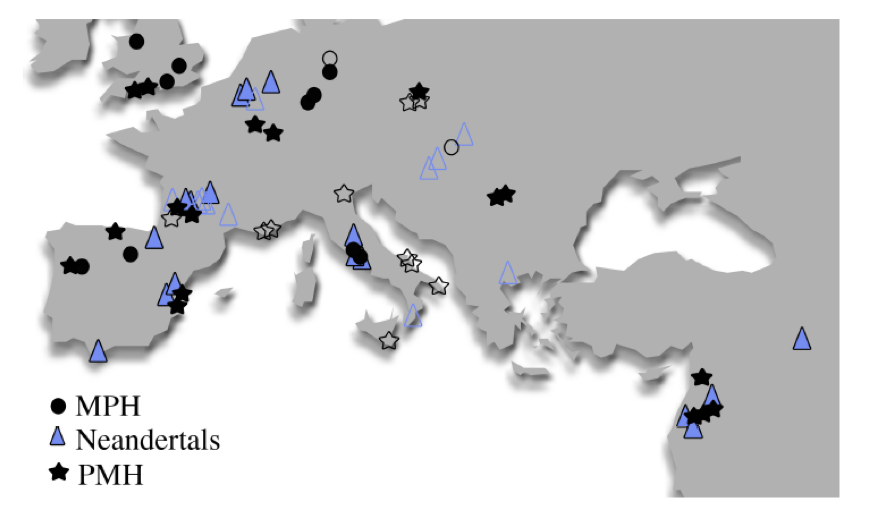
Geographical distribution of some of the most representative sites those are intended to be studied during the development of DEATHREVOL project.
MPH: Middle Pleistocene Hominins. PMH: Paleolithic Modern Humans.
